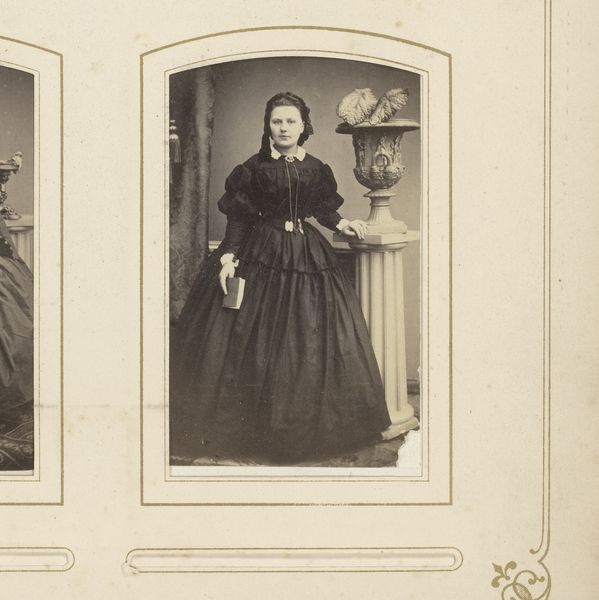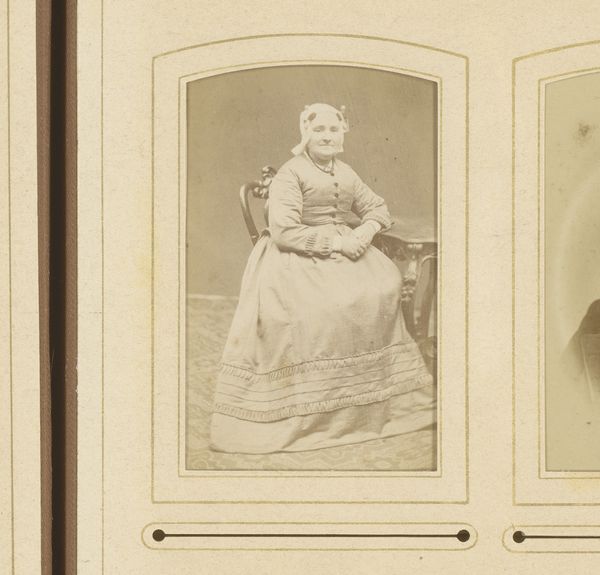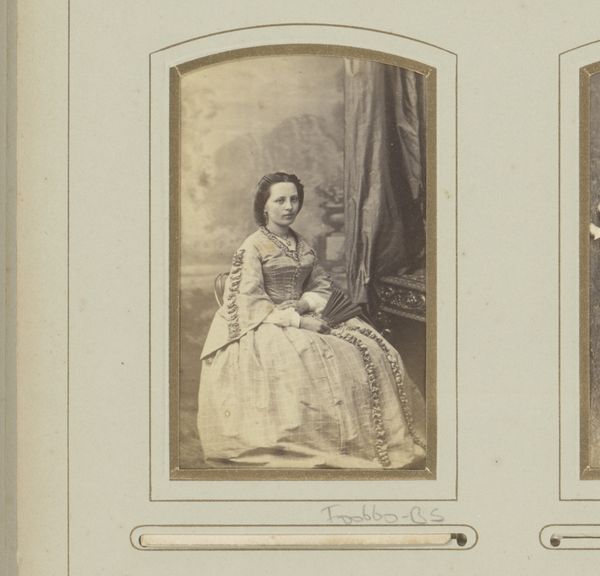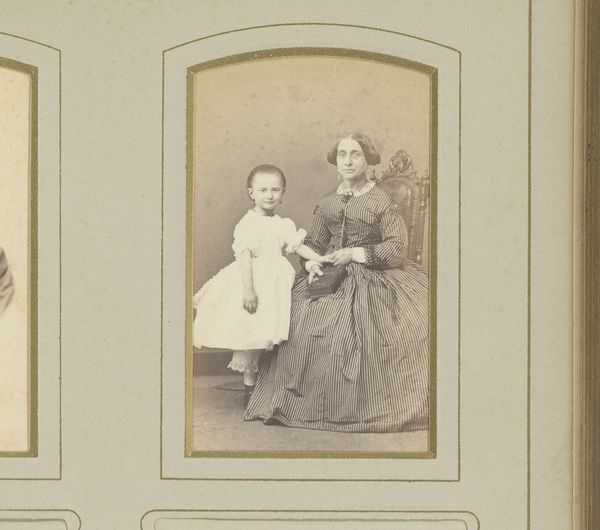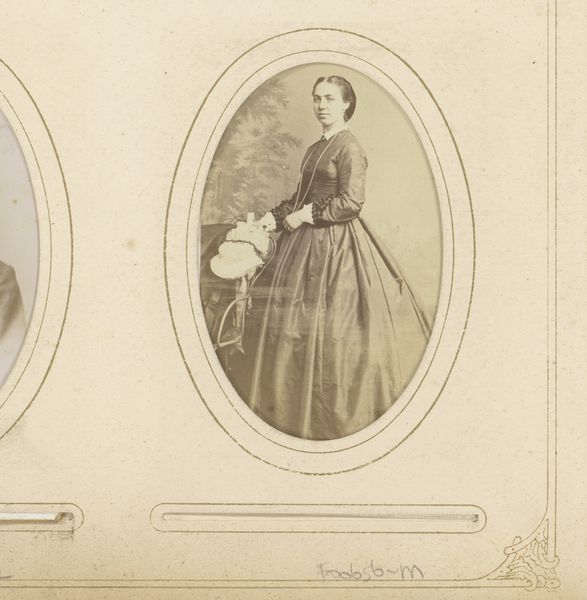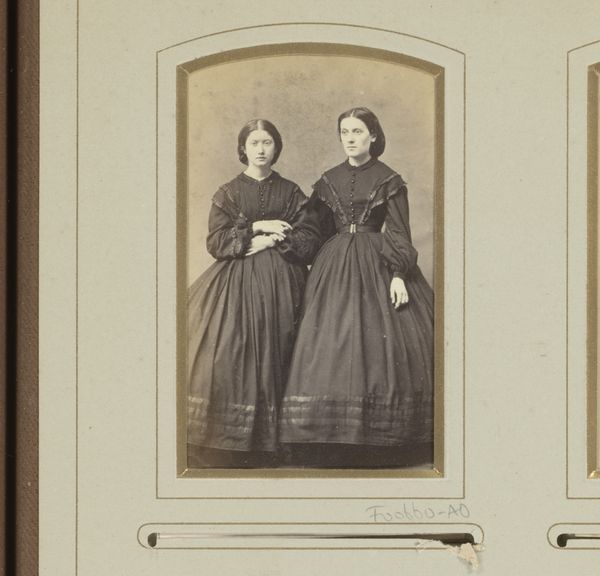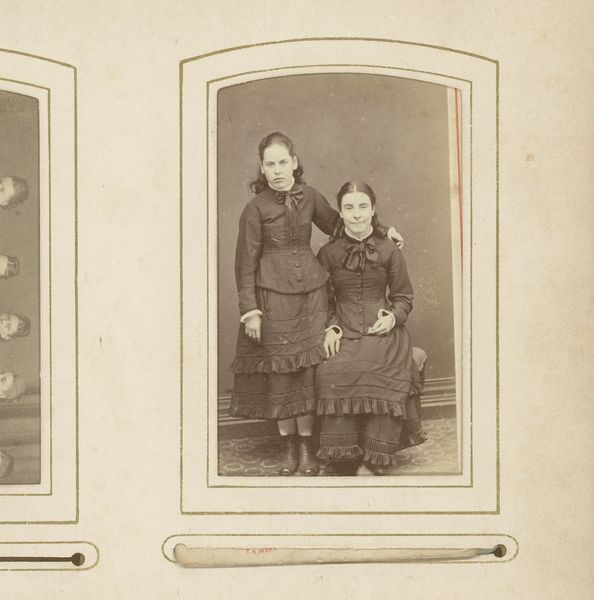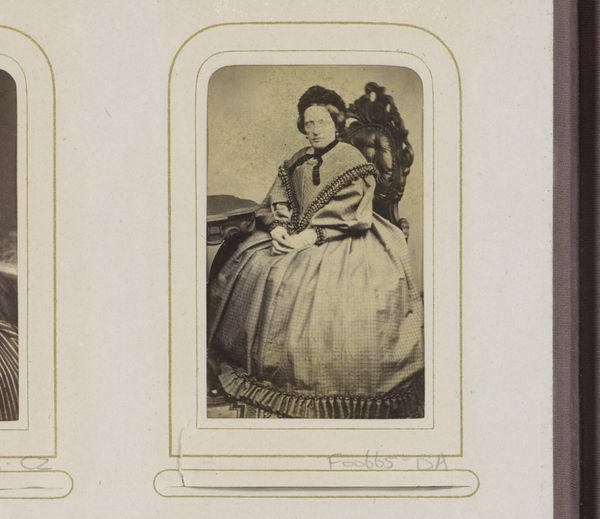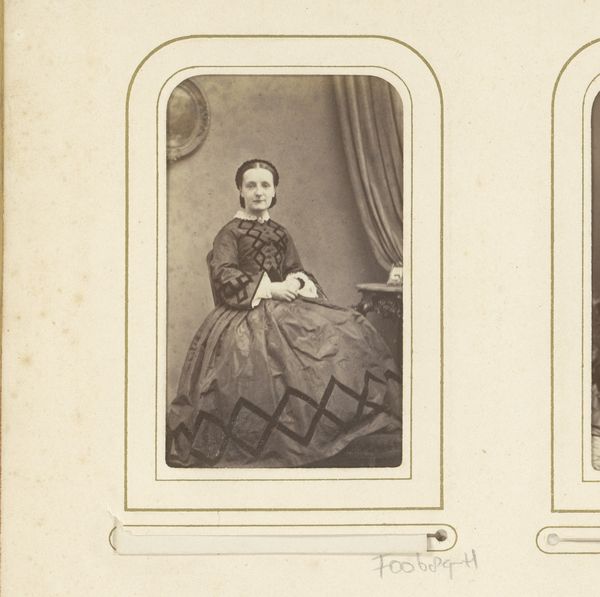
Dimensions: height 85 mm, width 51 mm
Copyright: Rijks Museum: Open Domain
Curator: Here we have an interesting piece—a gelatin-silver print titled "Portret van twee vrouwen," dating roughly from 1850 to 1900 and attributed to Th. Schütz. Editor: My initial thought? The overwhelming materiality of those dresses. Look at the sheer volume of fabric, how it dominates the composition! You can almost feel the weight and texture of it. Curator: Indeed. Consider the social implications of such garments. These aren’t just dresses; they represent status, wealth, and the prescribed roles of women during the mid-to-late 19th century. Photography like this one offered a certain access to this reality. Editor: Absolutely, but beyond the obvious status display, let's think about the labor involved. Who made these dresses? What were their working conditions? And how does the rise of photography affect the fashion industry? Was it disruptive? Curator: Excellent questions! And photography was undoubtedly changing social perceptions. Remember, portraits were once the exclusive domain of the wealthy, attainable through commissioning painters. Now, a burgeoning middle class could immortalize themselves via photography, shaping identity and self-representation. Editor: Speaking of self-representation, there’s an undeniable tension here. The women are clearly posed, yet their expressions seem…guarded. I wonder how much agency they had in their portrayal, considering societal expectations and the photographer's influence? And the rise of commerical studios too Curator: Precisely! Photographic studios democratized access but also professionalized portraiture, which meant the construction of carefully controlled images serving specific socio-economic and cultural goals, thus further enforcing standards of how women should behave and look. Editor: So, while appearing accessible, photos like these still participated in defining and reinforcing gender roles through manufacturing these portraits with fabrics from labor. What were people trying to express about labor in portraits such as this? Curator: An insightful paradox! The availability of this form did transform visual culture. While some may focus on its social restrictions or implications, looking at the labor can also inform what expectations were forming at the time this photograph was captured. Editor: Looking closely informs me. This exploration definitely shows that focusing on labor alongside the impact on visual culture informs more nuance to 19th century portraits. Curator: I agree, this image underscores how art functions as a marker of social change, while also demonstrating a fascinating tension with craft and mass media's labor forces in this time.
Comments
No comments
Be the first to comment and join the conversation on the ultimate creative platform.
